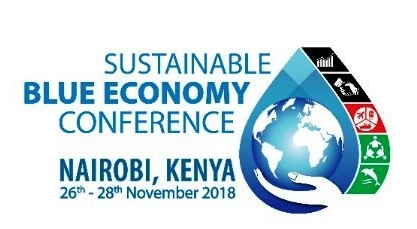Sustainable Blue Economy Conference
GS 3: IR | Bilateral, regional & global groupings & agreements involving India &/or affecting India’s interests
Why in News?
- The Sustainable Blue Economy Conference was held with the theme of ‘The Blue Economy and the 2030 Agenda for Sustainable Development’ in Nairobi, Kenya. The conference was organized for the first time by Kenya and co-hosted by Japan and Canada.
- India endorses the growth of the Blue Economy in a sustainable, inclusive and people centered manner through the framework of the Indian Ocean Rim Association (IORA)”.

Highlights:
- Sustainable Blue Economy Conference was held on the momentum of agenda of United Nations (2030) for the Climate Change Conference 2015 (Paris) and UN Ocean Conference 2017 (Call to Action) and Sustainable Development.
- More than 17,000 delegates from a total of 184 countries had participated in this conference where India was represented by the Union Minister for Shipping, Road Transport & Highways, NitinGadkari.
- Besides them, the representatives from World Wildlife Fund (WWF), International Maritime Organization (IMO), International Seabed Authority (ISA), World Bank, AFRIEXIMBANK, and Ocean Foundation were also present in the conference.
- Blue Economy is the economic benefit that comes from Earth’s coastal and marine environment. Marine-based economy, the Blue Economy provides social and economic benefits to the people while restoring, protecting and maintaining the diversity of marine ecosystems.
- With its strategic location in the Indian Ocean Region (IOR), India encourages the growth of Blue Economy inclusively and sustainably. Indian Ocean Rim Association(IORA) has developed a framework which is supposed to help India achieve its Marine-Based-Economic-goals.
- India is developing an infrastructure for its sea-borne-trade, and seafaring under an ambitious ‘Sagarmala Programme.’ The programme will improve maritime logistics and port led developments.
Sagarmala Programme:
- It has identified 600 plus projects entailing a huge investment of $120 billion (nearly Rs. 8 lakh crore) by 2020.
- It saves India $6 billion per annum in logistics costs besides creating 10 million new jobs and boosting port capacity by 800 Million Metric Tonne per Annum (MMTPA) to an overall 3500 MMTPA.






